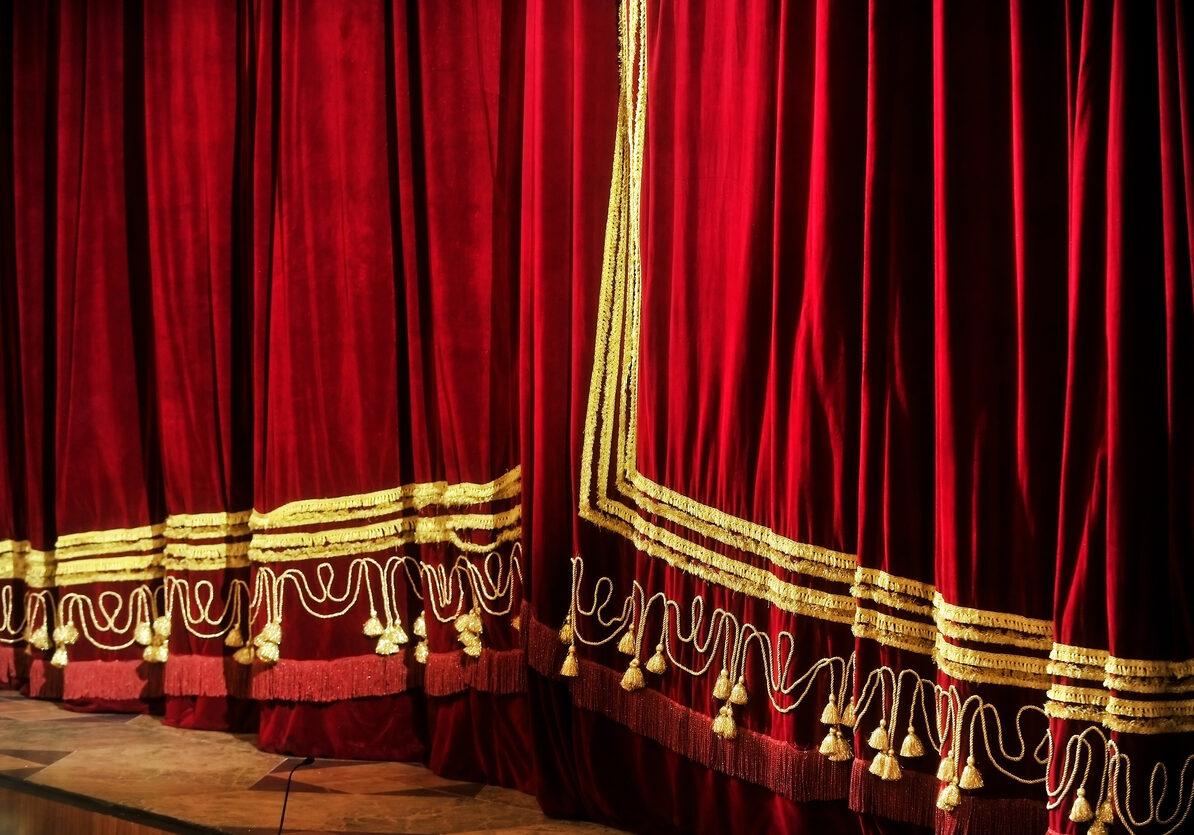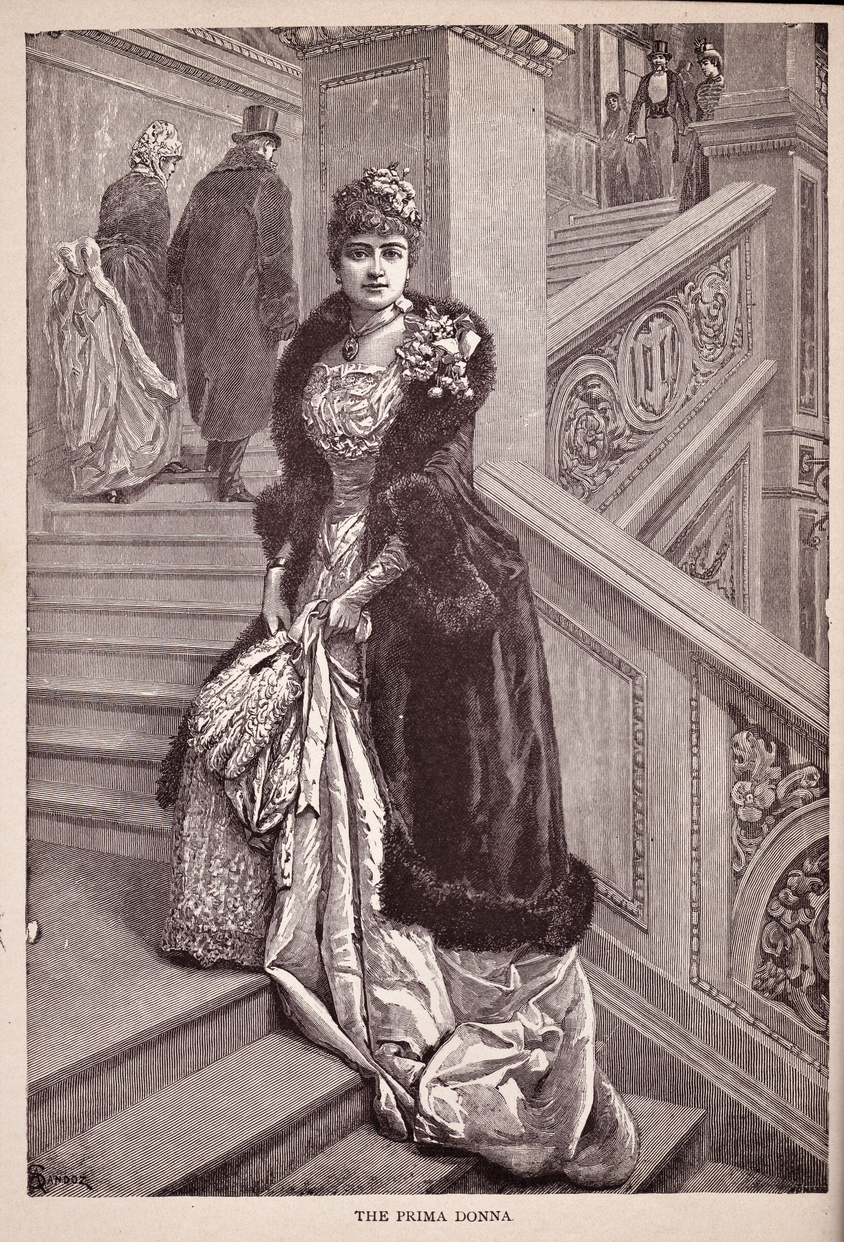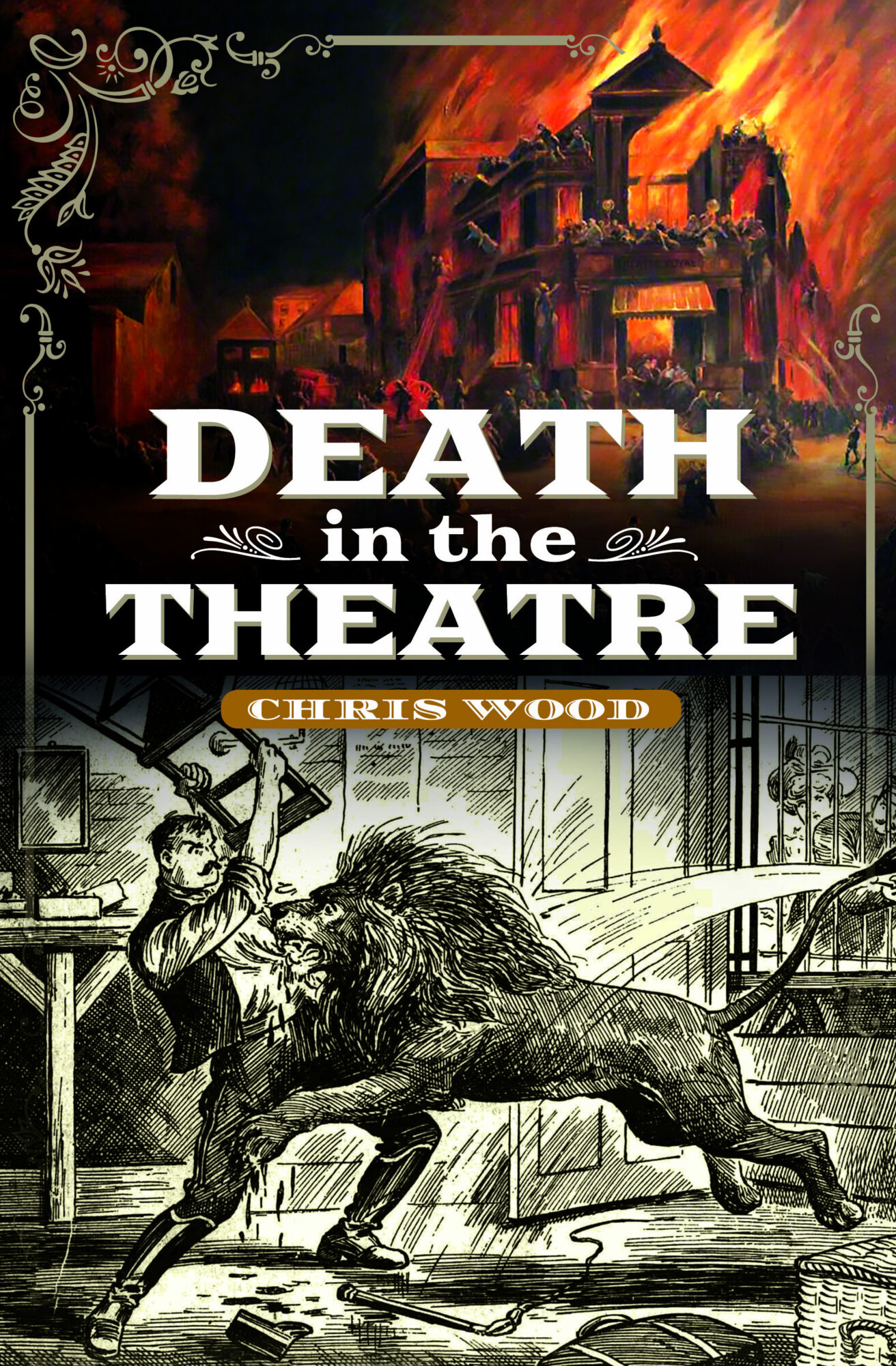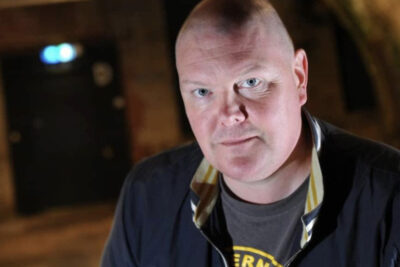
Death in the Theatre
by Chris Wood
Britain’s theatrical wonderland has been a cornerstone of culture for centuries, delighting and thrilling audiences with an assemblage of exhilarating spectacles.
Beyond the trodden boards and tucked neatly behind the curtain lies a catalogue of real-life destruction and grisly murder that our greatest tragedians would surely be proud to have presided over. Tread the bloodied boards of Britain’s theatres and witness the deathly dramas that have played out so dramatically within them with this extract from Chris Wood’s book, Death in the Theatre.
GRAND THEATRE, BLACKPOOL 1903
The resort of Blackpool is one of Britain’s foremost seaside towns, luring in excited rabbles of visitors with its unique and blasé assault on the senses. The sweeping tramways dissect the promenade, with people teeming about the seafront, all below the watchful eye of Blackpool’s iconic tower. Neatly positioned inside its base of course, is the Tower Ballroom, the world-renowned dance floor spectacular which remains today a Mecca for dance aficionados from across the globe, highlighting Blackpool’s prominence within the world of live entertainment.
The theatre opened a mere two months following Blackpool Tower’s inception and confirmed to all that this seaside town was elevating itself to unprecedented heights.
The popular landmark has stood since 1894, and its bold construction announced a period of uninhibited boom in the town. This decade in particular witnessed a revolutionary expansion of the town’s entertainment industry as it sought to provide for the thousands of visitors that the resort could now accommodate. In 1893 the Victoria Pier, now the South Pier, opened, and thus completed the trio of the popular landing stages that today house fairground rides aplenty for the more daring and thrillseeking visitor. In 1896 Blackpool’s initial serving for the lovers of such enterprises was introduced, and is something that still features broadly today amongst the town’s most popular attractions, the Blackpool Pleasure Beach.
Two years prior to this, in 1894, saw the opening of ‘The Hidden Gem of Blackpool’, the Grand Theatre, on Church Street. The theatre opened a mere two months following Blackpool Tower’s inception, and confirmed to all that this seaside town was elevating itself to quite literally, unprecedented heights. The theatre itself, though slightly more discreet than its neighbouring creations, was still afforded the very best in its construction.
Thomas Sergenson first arrived in Blackpool in 1876 to be the treasurer of the Prince of Wales Theatre, upon which he quickly took a five-year lease. Success here led Sergenson to do similar with Blackpool’s Grand Theatre, Blackpool 1903, which once again proved lucrative. He had an uncanny, yet much revered ‘knack’ of creating theatrical success within Blackpool’s existing establishments, usually where others had previously failed. As Sergenson’s profits soared, so too did his ambition which, doubtlessly encouraged by the proliferation of enterprising buildings all around him, shaped a personal desire to construct a spacious and modern theatre, designed upon the most contemporary of principles.
Sergenson commissioned the leading Victorian architect Frank Matcham to help realise his dream. The most prolific theatre architect the world has seen believed that the theatre venue should be an entertainment in itself, and in this mantra he certainly delivered, relentlessly. The list of Matcham’s professional output is lengthy, and yet despite this, he always prevailed in producing his own bespoke style, and always with a remarkable theatrical flair. Matcham, then, would be the perfect suitor to fulfil Sergenson’s cravings, so he issued Matcham with a design brief to create the ‘best, prettiest and cosiest theatre possible’. In July 1894, at a cost of £20,000, Matcham had indeed fulfilled his mandate, Sergenson christening the theatre: ‘Matcham’s Masterpiece’. Certainly, the Grade II listed building, even today, is recognised as one of Matcham’s finest creations. Inside, Matcham was able to achieve the rare feat of combining intimacy with a sense of spaciousness. The seats were upholstered in fine English blue velvet, each owning an enviable view of the stage through Matcham’s cantilevered approach to the design and the omitting of obstructing columns. The balcony and box fronts were and indeed still are adorned with magnificent plasterwork, as are the proscenium and ceiling, all of which combine to form one of the best surviving examples of Matcham majesty.
At the moment of its opening the press too were gushing over Blackpool’s newest theatre:
Mr Sergenson’s new Grand Theatre at Blackpool was opened by Mr Wilson Barrett with a performance of Hamlet. The building was crowded with a fashionable and enthusiastic assembly, and on every hand were to be heard expressions of admiration of the handsome theatre and its comfortable internal arrangements. It is beyond doubt one of the fittest theatres in the province.
Even the opening night programmes did not escape a touch of opulence, with each copy printed on perfumed silk, the perfume aptly named ‘Tower Bouquet’. The venue was even a suitable location for one Winston Churchill to appear, when, in 1902, he was the principal speaker at a political rally.
As multi-faceted as its use was, the Grand remained perhaps at its most comfortable in entertaining the masses. With the expansion of Blackpool’s live entertainment, came the much desired influx of visitors from all over Britain. Of course, the glitz and glamour was not reserved solely for the holidaymakers, and residents in and around Blackpool revelled amid the various temptations on offer.
Mary Manning lived with her husband at 112 Caunce Street, a short walk from the Grand Theatre. On Tuesday, 27 January 1903, the couple were in the Grand’s gallery to watch J.F. Elliston’s thrilling drama Alone in London. Described by The Times as a ‘gigantic success’, the play was a melodrama comprising four acts and boasted the ‘highest form of scenic illusion’. Audiences were wowed as items on the stage would miraculously move of their own accord in, according to one report, a fashion akin to happenings ‘produced at a spiritual seance’.

Little wonder then that the play created swathes of excitement amongst the energetic audience. Mary Manning was certainly one of the more buoyant viewers within the gallery that evening, and became hugely exhilarated by the proceedings at an early stage. She was heartily invested in the performance and heard to continually holler her exuberant approval as the play progressed. Mary’s husband, a more peripheral man and less inclined to such public displays of delight, was soon urging his wife to suppress her enthusiasm and encouraged her to retake her seat. For a brief period, Mary did this, but even the velvet finery was not enough to keep her seated for long. Shortly after 10 pm and with the play in its final act, she was once more overcome by excitement. Stood in the gallery, and again announcing her satisfaction towards the stage, her face began to suddenly twitch uncontrollably before she ‘swooned’ into a state of unconsciousness onto the floor, the occupants of the gallery unsure of which drama to follow as her husband clamoured desperately for assistance.
Mary was swiftly carried to the landing area of the gallery and medically attended, but was pronounced dead at the scene. It transpired later that the 32-year-old had suffered from a weak heart and the dramatic proceedings on stage had evidently been of excessive excitement to the woman and subsequently caused her death.
The dramatic proceedings on stage had evidently been of excessive excitement to the woman and subsequently caused her death…
Blackpool, long regarded as a destination to quench one’s excesses had, in this case, proved too much for Mary Manning. But of course the wheels of merriment in Blackpool relented on, and beneath the extravaganza of illuminations that light the town up, The Grand Theatre continued to prosper. In the 1920s the theatre was used by leading West End producers for British premieres, and for many years multiple plays and musicals were performed here prior to their introduction to the London stages. The Grand’s prestige continued throughout the 1950s, despite the increasing impact of television. It proved to be a golden period for the venue, as long balmy summer seasons generated lucrative revenue, particularly with appearances from comedy favourites such as Arthur Askey, Thora Hird, Sid James and Jack Douglas.
More recent years have left the theatre battle-scarred but not defeated, having faced the prospect of demolition in 1973. The battle for its survival was a laborious yet ultimately victorious one, but the fight to retain the famous theatre did thankfully, bring about the creation of the excellent support group ‘The Friends of the Grand’, formed initially to rescue the building from its proposed demolition, it now aids the venue by generating income through fundraising events, whilst ultimately aiming to enhance the comfort of its patrons; something we can safely assume would fill its creator Thomas Sergenson with eternal contentment.

Pen & Sword Book Cover / Jacket artwork
The chapter is taken from Death in the Theatre by Chris Wood, published by Pen & Sword Books. Available here.
NorthernLife Sep/Oct/Nov 24




